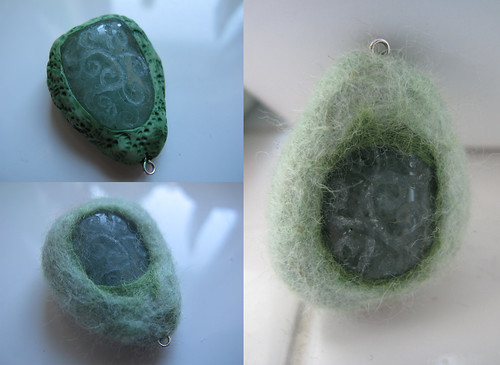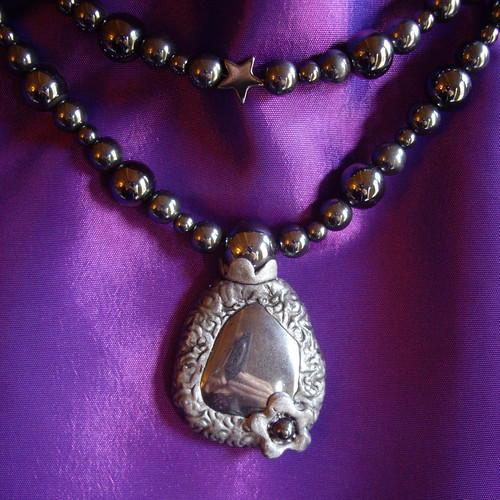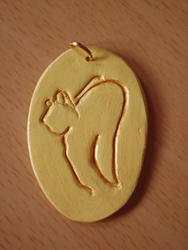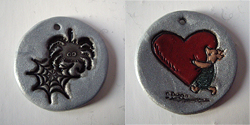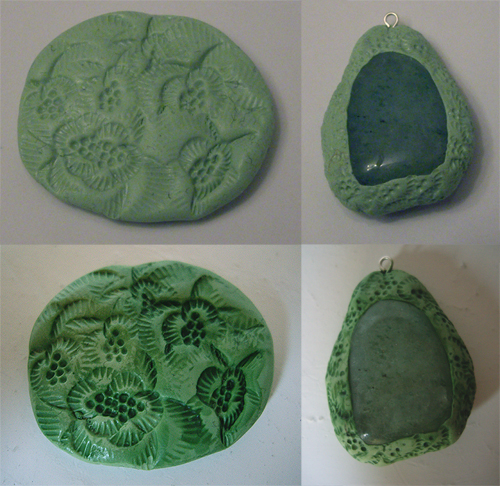A little experiment for a Tuesday afternoon – a felted pendant.
This nugget of purest green has been hanging around on my desk since January 2010. It sort of did what I wanted it to (the polymer clay encased the stone, took texture and paint well, and provided an anchor for a bail), but I was never quite happy with the finish of it.
Interestingly though, I’ve just found the piece of fimo that I added fragrance to at the same time, and it just about still smells. So now I know that the fragrance lasts roughly three years before it wears off. Not bad!
Given that this pendant had effectively become a waste product, in that I didn’t like it enough to either wear or sell, I decided that I had nothing to lose by seeing what would happen if I took my little rotary drill to it. The stone (aventurine) engraves quite nicely, though it’ll take a little more practice and experimentation with different shapes of diamond point to discover what works best.
Once that was done I thought I might as well carry on experimenting, so I rummaged about in my little bag of coloured wool. Less than an hour later I had this – an engraved gemstone encased in felt.
Now this I do like, very much.
The wool has shrunk nice and tightly around the stone so that it can’t fall out, and you can see the inner layer of dark green felt just poking out around the edges of the opening. The polymer clay that I didn’t like has been hidden away completely, and I love the soft edges of the new shape. I might do a little experiment with fragrance on this one as well, by adding a couple of drops of essential oil to the back of the pendant. I doubt that will last for three years, but I’ll let you know!

